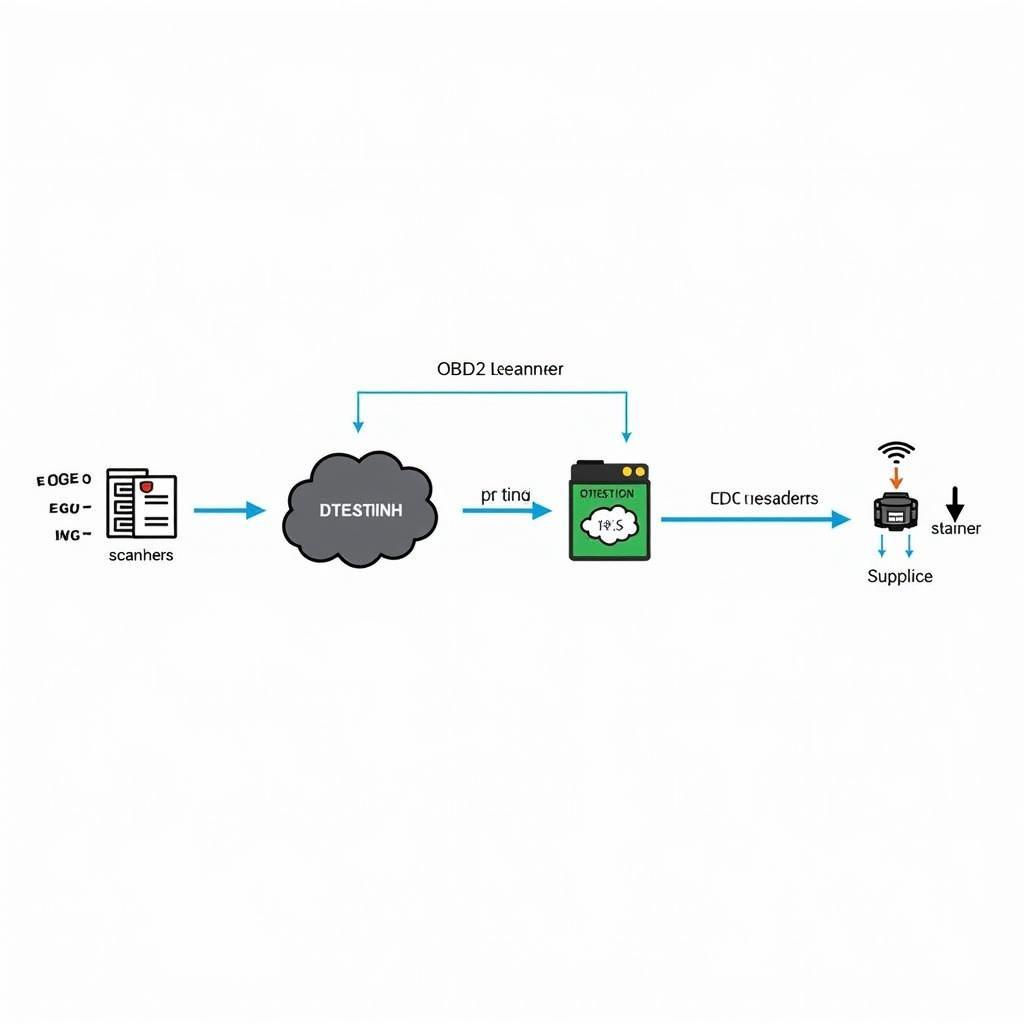The term “obd2 iso 9141-2” might seem like a jumble of technical jargon, but it represents a crucial element in how we diagnose and troubleshoot modern vehicles. This comprehensive guide delves into the depths of OBD2 ISO 9141-2, demystifying its intricacies and highlighting its significance in the realm of automotive diagnostics.
What is OBD2 ISO 9141-2?
Before we delve into the specifics of ISO 9141-2, let’s briefly revisit the basics of OBD2. On-Board Diagnostics, commonly known as OBD2, is a standardized system that allows external devices to access a vehicle’s computer system and retrieve diagnostic information. This information encompasses a wide range of data points, including engine performance, emissions, and other crucial parameters.
ISO 9141-2 is one of the communication protocols used by the OBD2 system. Think of it as a specific language that enables the OBD2 scanner to “talk” to your car’s computer. It outlines the rules and procedures for data exchange between the scanner and the vehicle’s Electronic Control Unit (ECU).
 OBD2 ISO 9141-2 Communication Diagram
OBD2 ISO 9141-2 Communication Diagram
How Does ISO 9141-2 Work?
ISO 9141-2 employs a half-duplex, single-wire communication method. This means that data is transmitted in one direction at a time, similar to a walkie-talkie conversation. The protocol relies on voltage levels to represent data bits. A series of high and low voltage signals are sent across a single wire, forming a specific pattern that corresponds to commands and responses.
Imagine you’re sending a message using Morse code. The dots and dashes represent specific letters, forming words and sentences. Similarly, ISO 9141-2 uses voltage fluctuations to create a “language” understood by both the OBD2 scanner and the vehicle’s ECU.
Importance of ISO 9141-2 in Vehicle Diagnostics
ISO 9141-2 plays a pivotal role in enabling accurate and efficient vehicle diagnostics. By adhering to this standardized protocol, OBD2 scanners can retrieve vital information from a vehicle’s ECU, regardless of the manufacturer. This interoperability is crucial for mechanics and car owners alike, as it streamlines the diagnostic process.
Here’s how ISO 9141-2 benefits vehicle diagnostics:
- Standardized Communication: It establishes a common language for communication between diagnostic tools and vehicles, ensuring compatibility.
- Detailed Error Codes: It enables the retrieval of specific Diagnostic Trouble Codes (DTCs), which pinpoint the root cause of malfunctions.
- Real-Time Data Monitoring: It allows mechanics to observe live sensor data, such as engine RPM, coolant temperature, and oxygen sensor readings.
- Enhanced Troubleshooting: By providing detailed insights into the vehicle’s systems, ISO 9141-2 facilitates quicker and more accurate troubleshooting.
Vehicle Compatibility with ISO 9141-2
While OBD2 is a universal standard, not all vehicles use the same communication protocols. ISO 9141-2 was primarily used in older vehicles, particularly those manufactured in Europe and Asia before the widespread adoption of CAN bus systems.
[is09141 obd2]
If you’re unsure whether your vehicle uses ISO 9141-2, refer to your owner’s manual or consult a trusted mechanic. It’s essential to use an OBD2 scanner that supports the specific protocols used by your vehicle to ensure proper communication and accurate diagnostics.
Evolution of OBD2 Protocols
As technology progressed, newer communication protocols emerged, offering faster data transfer rates and more sophisticated diagnostic capabilities. The Controller Area Network (CAN bus) protocol has become the dominant standard in modern vehicles, largely replacing older protocols like ISO 9141-2.
[16-poliger iso 9141-2 obd2-stecker]
Despite the prevalence of CAN bus systems, understanding older protocols like ISO 9141-2 remains crucial for diagnosing and repairing a wide range of vehicles on the road today.
Conclusion
OBD2 ISO 9141-2, though gradually being superseded by newer technologies, played a pivotal role in shaping the landscape of automotive diagnostics. Its standardized communication protocol revolutionized the way we diagnose and troubleshoot vehicles, paving the way for more advanced systems.
Understanding the fundamentals of OBD2 protocols empowers car owners and mechanics alike. It equips us with the knowledge to interpret diagnostic data, identify malfunctions, and make informed decisions regarding vehicle repair and maintenance.
[obd2 compatibility list]
FAQs
1. Is ISO 9141-2 still used in modern vehicles?
While CAN bus systems are now prevalent, ISO 9141-2 is still found in many older vehicles, especially those manufactured before the mid-2000s.
2. Can I use any OBD2 scanner with a vehicle that uses ISO 9141-2?
No, it’s crucial to use a scanner that specifically supports the ISO 9141-2 protocol for proper communication with the vehicle’s ECU.
3. What are the advantages of CAN bus systems over ISO 9141-2?
CAN bus offers significantly faster data transfer rates and allows for more complex diagnostic capabilities compared to older protocols.
4. What should I do if I encounter communication errors when using an OBD2 scanner?
Double-check the scanner’s compatibility with your vehicle, ensure the ignition is on, and inspect the OBD2 port for any damage or loose connections.
5. Where can I find more information about my vehicle’s specific OBD2 protocols?
Refer to your owner’s manual or consult a qualified mechanic for detailed information about your vehicle’s diagnostic systems.
Common OBD2 ISO 9141-2 Questions
My OBD2 scanner isn’t connecting to my car. Could it be an ISO 9141-2 issue?
How can I tell if my car uses the ISO 9141-2 protocol?
What’s the difference between ISO 9141-2 and other OBD2 protocols?
Explore More OBD2 Topics
- [97 civic obd2 wires]
- [nexpeak obd2 nx501 vechile compatibity]
Need help with your car diagnostics? Contact our team of experts via WhatsApp: +1(641)206-8880 or Email: [email protected]. We’re available 24/7 to assist you.